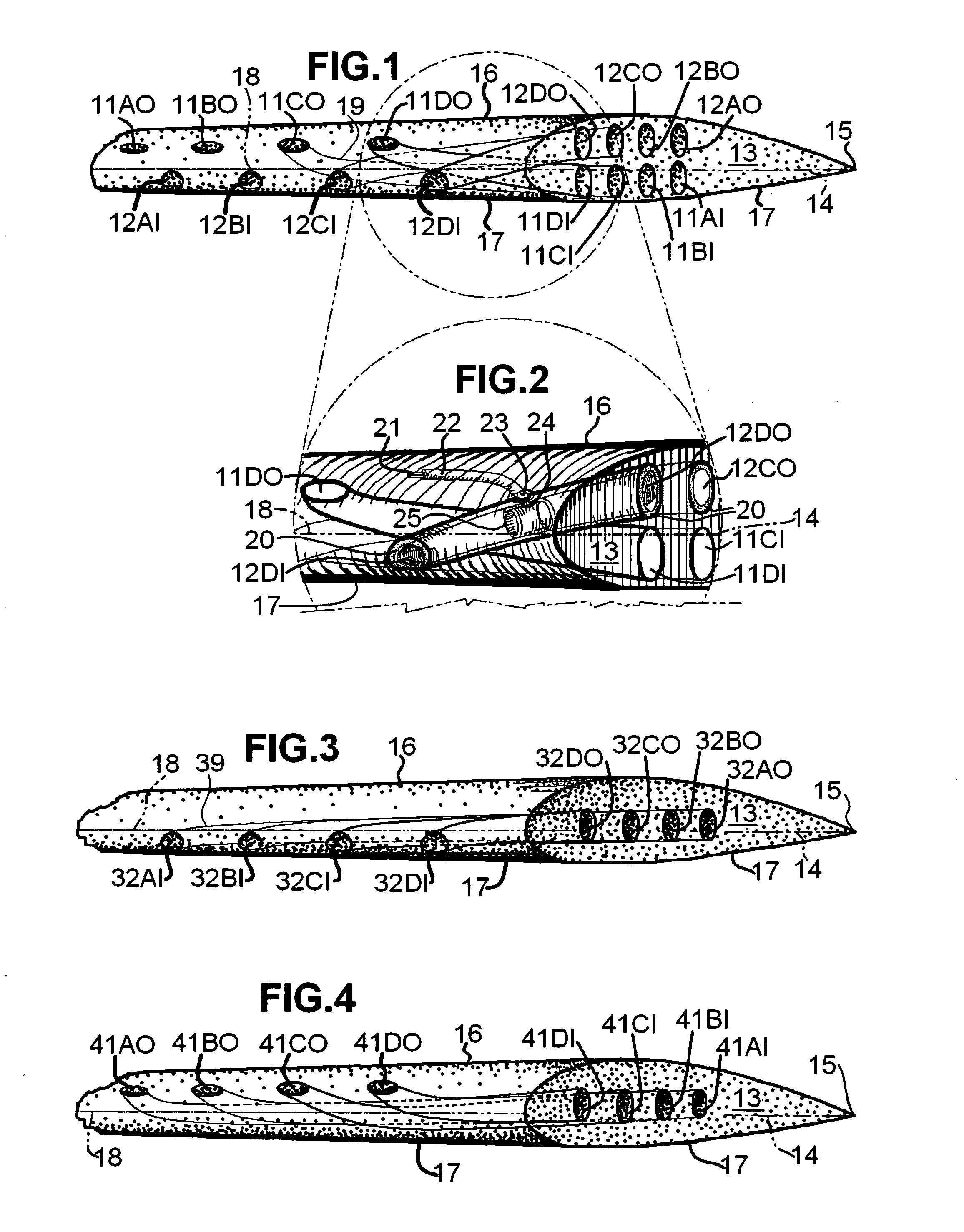Surface flow diverting and static charging ducted pores on wing or blade tip to reduce wake and BVI noise
a surface flow and static charging technology, applied in the direction of all-wing aircraft, boundary layer controls, influencers by generating vortices, etc., can solve the problem that the technology state does not offer a simple method to produce counter-rotating vortices without, and achieve the effect of promoting the interlayer movement of air molecules
- Summary
- Abstract
- Description
- Claims
- Application Information
AI Technical Summary
Benefits of technology
Problems solved by technology
Method used
Image
Examples
Embodiment Construction
[0027]The airfoil wing tip ends shown in FIG. 1, FIG. 3 and FIG. 4 could belong to an aircraft or rotorcraft. The wing tip end in FIG. 1 has airfoil section NACA 2415 with upper surface 16, lower surface 17, leading edge 18, chord line 14, trailing edge 15 and wing tip side face 13. FIG. 2 also shows the above-recited elements save trailing edge 15. Wing tip side face 13 acts as a span-wise closing, if the airfoil described above is considered to have an inside volume formed by the enclosure of upper surface 16, lower surface 17 and wing tip side face 13. In FIG. 1, 11AI, 11BI, 11CI and 11DI are wing tip side face inlets to ducted pores (one shown as ducted pore 19 in FIG. 1) which correspondingly lead air adjacent to wing tip side face 13 to upper surface outlets 11AO, 11BO. 11CO and 11DO on upper surface 16 (FIG. 1). Similarly, Lower surface inlets 12AI, 12BI, 12CI and 12DI on lower surface 17 (FIG. 1) are airfoil lower surface inlets to ducted pores (similar to ducted pore 19 in ...
PUM
 Login to View More
Login to View More Abstract
Description
Claims
Application Information
 Login to View More
Login to View More - R&D
- Intellectual Property
- Life Sciences
- Materials
- Tech Scout
- Unparalleled Data Quality
- Higher Quality Content
- 60% Fewer Hallucinations
Browse by: Latest US Patents, China's latest patents, Technical Efficacy Thesaurus, Application Domain, Technology Topic, Popular Technical Reports.
© 2025 PatSnap. All rights reserved.Legal|Privacy policy|Modern Slavery Act Transparency Statement|Sitemap|About US| Contact US: help@patsnap.com



